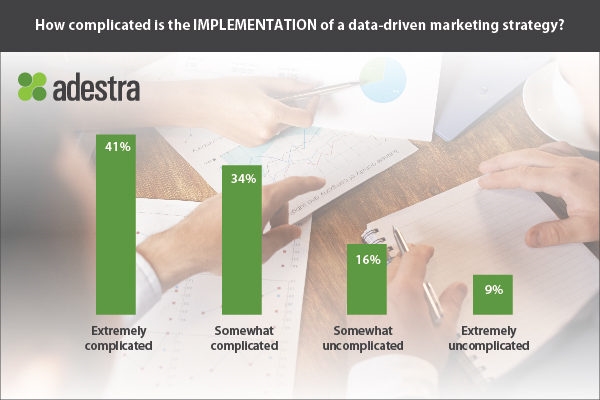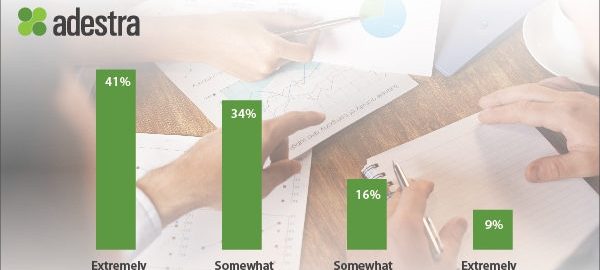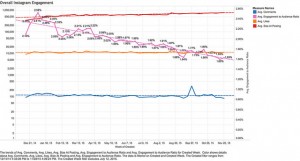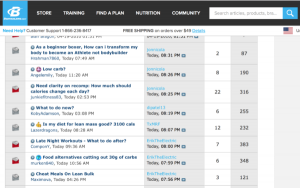— March 28, 2018
At a recent conference, I spoke with a young email marketer who was relatively fresh to the job. He told me he had heard other speakers talk about using data to enhance email programs and wanted to know where the best place to start was.
Our conversation got me thinking: Where do marketers learn about data these days and is it within their own company or from third-party sources? I continued to speak to the young email marketer about the different kinds of data available around consumers and how accessibility has become near-instantaneous.
You see, technology and systems exist so that at the point of acquisition you can augment your customer records and create profiles. But making it work is not as easy as pressing a few buttons on a dashboard.
My company, Adestra, just published 2018 Data-Driven Benchmarks for Success, in which we talk about the challenges even the best marketers face in using data to make strategic decisions.
Data-driven challenges
Our paper is based on a survey of 162 company executives who describe their data-driven marketing strategy as “best in class” or “very successful.” We wanted to know what was working and what challenges remain even for high-performing marketers.
You might think that highly successful marketers have conquered all the hurdles. Think again!
Enriching data quality and integrating across platforms emerged as the two top challenges that even top marketers struggle with. They’re asking, “What data do I need to make better decisions, and where do I get it?”
4 tips to data success
These tips will help you make the transition to data-driven strategizing:
- Get outside help.
If you don’t have anyone in-house who can help you, find an agency to lead you through the process. Data is so new, rich and available and growing faster than anyone can comprehend. Many smart data marketers are asking for help, so it’s not a knock on your company’s abilities.
We at Adestra are seeing a substantial increase in business with agencies because they realize they need help to fill their data gaps. Experts from a competent agency will help you figure out what data you need and where it fits into your marketing plan because they can see problems across the board.
- Figure out what data is available to you.
Talk with different data vendors to learn the breadth and depth of the data they have. Your IT or database people should have ideas about reputable vendors. Or, join a data marketing group on LinkedIn or in a professional discussion group in your industry and ask for references.
The ability to get third-party data is relatively new in terms of access to it and how easy and quickly you can obtain it. So, knowing what’s out there and what new pieces of information are coming out is important. New sites and information sources come up every day, whether through social media or people selling information.
- Commit to testing and progressive profiling.
Once you begin working with data, remember to follow testing regimens that validate you’re doing the right thing with it. You’re working with data that shows you who your customers are and what their behavior is, not just on your website but beyond.
The problem is that you can get stuck inside an echo chamber by assuming your data use is on target, when you could misinterpret it or miss crucial insights. A testing regimen can validate your models, assumptions and findings. This will help you avoid the problem of wasting time and money on misguided strategy.
Once you find a certain cohort in your data model and it has certain propensities, you can start a progressive-profile campaign using a coordinated series of emails that ask questions to validate your hypothesis as well as the cohort itself.
If your assumption is that your cohort is, say, plugged into a certain political position, you should be able to ask questions in your profile emails that can point that out.
For example: “What’s your favorite nonlocal news station?” Someone who names CNN or MSNBC might be significantly different from a Fox News fan. If your respondents choose “Other” or “None,” your characteristic could be off, and it’s back to the data drawing board.
- Let the data do the talking.
One of the biggest failures I see with data is that people confuse data modeling and finding insights with validating what they see. In other words, they see things in data that don’t exist, or they miss a huge insight that would suggest a change in direction.
So, let the data tell you what the finding is. If it doesn’t jibe with your models and hypotheses, then, once again, you adjust them.
You’re not alone out there
Whether you’re just starting out working with data or struggling to improve your use of it, you should be heartened to know that you’re not alone. Our report shows that even for successful marketers, implementing a data-driven strategy is complicated.

But, 2018 Data-Driven Benchmarks for Success also points a way through the uncertainty to suggest solutions and help you compare your progress with your peers.
It’s also important to remember that working with data is complex. It moves fast. Try not to think that you’ve solve the Big Data question or the AI question just because you’ve partnered with a vendor. Ask for help and look for valid resources in your industry. Our report gives you a head start.
Remember: It won’t be long before the holiday seasons creep round on us again (how is it almost April already?!). Time to get your data act together!
Digital & Social Articles on Business 2 Community
(29)








